The Bufflehead is a small duck species that lives in North America. Males of this species have a large white patch of feathers on their heads, while females have smaller white cheek patches.
These birds are important as both ornamental birds and gamebirds. Bird watchers in particular love to spot these colorful ducks, and thankfully for them buffleheads are quite common. Read on to learn about the bufflehead.
Description of the Bufflehead
Like most species of ducks, male buffleheads are much more colorful and dramatic than their female counterparts. Males have iridescent feathers and large white patches, while females are primarily dull black.
The males have a large patch of white feathers on the back of their rounded head, and iridescent green and purple on their faces. Both males and females generally weigh less than two pounds and measure around a foot long.
Interesting Facts About the Bufflehead
Buffleheads are pretty funny-looking birds. The males have unusually large and rounded heads, with bright colored feathers. These ducks are more than a pretty face, learn more below!
- Bighead – These ducks have abnormally large heads as it is, but males can make their heads look even bigger! While displaying, male buffleheads lift all the feathers on their heads. This puffs their head up to unusually large proportions.
- Picky Nester – Unlike other waterfowl, this species does not like to nest on the ground. Instead, they choose the nesting holes of other bird species. The vast majority of of these ducks use the nests of Northern Flickers to raise their young in.
- Small Species – This species of duck is one of the smallest in North America. They are tied with the green-winged teal for the smallest duck species in America.
- Widespread Birds – These ducks live across much of North America, from the frigid tundras of Canada to the warm coasts of Mexico. They breed and live from Alaska south into central Mexico. They migrate north in the summer and south in the winter.
Habitat of the Bufflehead
This species’ preferred habitat varies based on the season. During the breeding season they live in ponds and lakes, and during the winter they usually live along the coast.
While nesting, they choose water sources close to forested areas. During the winter, they live primarily in estuaries, bays, harbors, and on secluded beaches.
Distribution of the Bufflehead
Throughout the course of the year, these birds range over a wide expanse of North America. Whether breeding, migrating, or stopping for the winter, these ducks inhabit ecosystems from Alaska and Canada into Mexico.
Most of their Canadian range consists of breeding grounds, with the exception of the coastlines. Consequently, most of their North American and Mexican range consists of overwinter and migration habitat.
Diet of the Bufflehead
These ducks eat a wide variety of foods. Because they feed on both plants and small animals, they are omnivorous. Their plant-based diet consists mostly of seeds and some aquatic vegetation.
In freshwater, they hunt for insect larvae, snails, worms, and clams. In saltwater, they hunt for fish eggs, shrimp, snails, crabs, small fish, and shellfish.
Bufflehead and Human Interaction
Historically, humans have impacted the populations of buffleheads, primarily through hunting and habitat destruction. Unrestricted hunting caused severe declines in the beginning of the 20th century, but added protections have helped them bounce back.
Though they are not nearly as numerous as in the past, their populations are stable. Because of this, the IUCN lists this species as Least Concern.
Domestication
Humans have not domesticated buffleheads in any way.
Does the Bufflehead Make a Good Pet
No, buffleheads do not make good pets. The vast majority of them migrate seasonally, and living in one place does not suit them. It is also illegal to own this duck as a pet in most places.
Bufflehead Care
In a zoological setting, these ducks often live with other small waterfowl species. While they are social, they are not extremely gregarious, so small groups or pairs are perfectly happy.
Their habitats must have plenty of room to swim, and a variety of branches, perches, and trees for them to fly up into. Zookeepers feed them a pelleted insectivore diet, with small fish and some vegetation added as needed.
Behavior of the Bufflehead
Unlike some waterfowl, these ducks are not extremely gregarious, and do not live in large groups. Pairs and small flocks of birds congregate together near water sources.
They spend much of their time cruising through the water and searching for food. Buffleheads often eat underwater as well. Their dives are short and frequent.
Reproduction of the Bufflehead
This species is usually monogamous, and a pair breeds for multiple seasons. Males perform acrobatic mating dances with their feathers puffed out. Pairs nest in tree cavities, usually abandoned woodpecker nests. The females lay between 8 and 10 eggs, and incubate them for around a month.
Once the ducklings hatch, the female leads them to the water and helps them find food. When the ducklings are around 2 months old, they begin to fly, but stay with their parents until it is time to migrate.

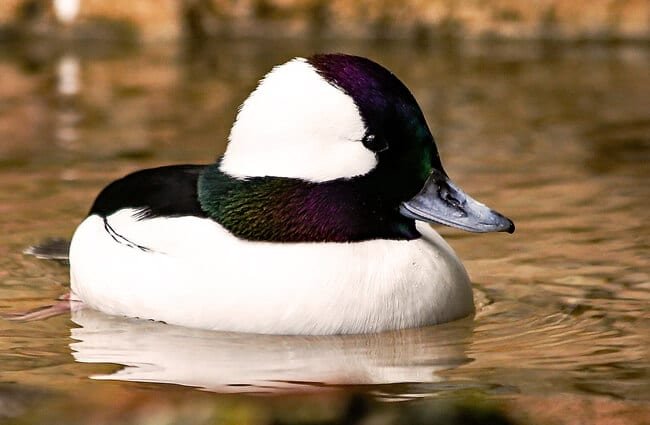

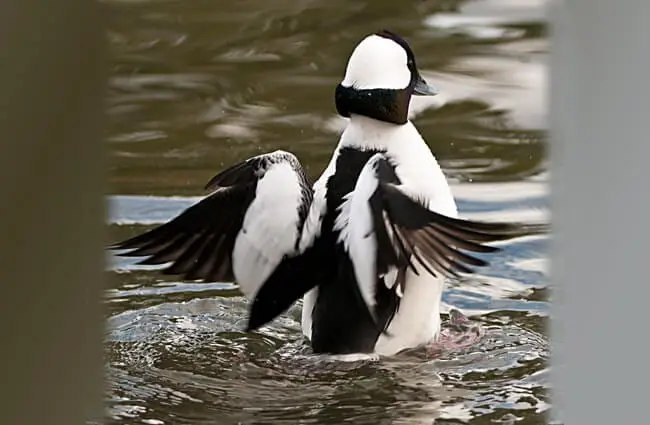



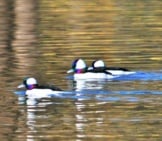

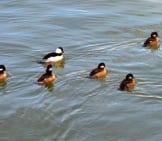
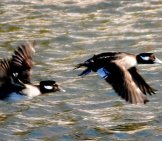
![Red Angus Closeup of a beautiful Red Angus cowPhoto by: U.S. Department of Agriculture [pubic domain]https://creativecommons.org/licenses/by/2.0/](https://animals.net/wp-content/uploads/2020/03/Red-Angus-4-238x178.jpg)












![Red Angus Closeup of a beautiful Red Angus cowPhoto by: U.S. Department of Agriculture [pubic domain]https://creativecommons.org/licenses/by/2.0/](https://animals.net/wp-content/uploads/2020/03/Red-Angus-4-100x75.jpg)

